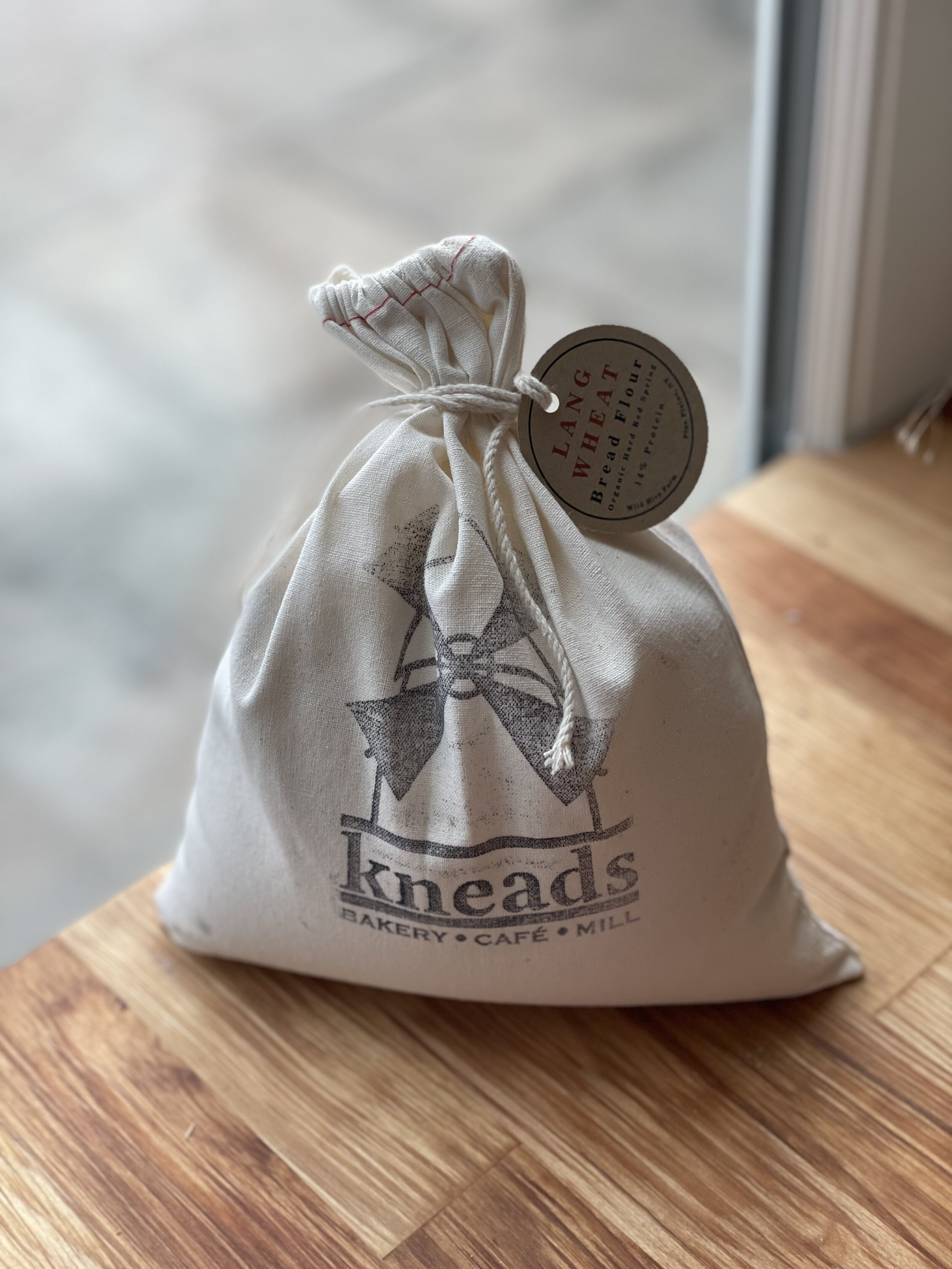
Our farmers. Our mill. Our flour.

Our Farmers
Our flour begins with careful sourcing and farming practices. We proudly work with certified organic grain farms, Wild Hive Farm and Oechsner Farms, who are both committed to promoting grain based local agriculture.
During our visit to the Finger Lakes, Thor Oechsner explained how, at a time when conventional farming dominated the region, he helped pioneer the organic grain and sustainable agriculture movement in the north-east. He, alongside his partner companies, Farmer Ground Flour and Wide Awake Bakery, are a great example of the tradition of local farming, milling and baking.
Don Lewis of Wild Hive Farm inspired us with his dedication to educating the community farmers, millers, and bakers alike offering tips and direction on working with various grains. Simultaneously, having owned a bakery for several years, he is very familiar with grains from a baker’s perspective. His passion for the grains he grows is evident, as is his commitment to continuously building relationships with those who use them.
Working with local farmers like these provide us with the opportunity to work with unique grains ranging from heritage wheats, like Red Fife to the ancient grain Einkorn.
Our Mill
Milling is an art in and of itself; dialing in on all the variables and understanding the process is important to generate a flour that is extremely fine. Grinding your own flour starts with a quality mill, therefore, we reached out to Andrew Heyn and Blair Marvin - Bakers/Co-Owners of Elmore Mountain Breads along with their partner company New American Stone Mills in Elmore, VT and asked them about how their businesses began.
With his knowledge of milling and baking, Andrew felt he could improve on commercial mills, so he designed and created a mill from a baker’s perspective. Word spread, and now New American Stone Mills can be found intermittently throughout Europe, as well as across the United States, Canada, Australia. Visiting the bakery and learning about their process and the mills confirmed our desire to join the community of bakers to work directly with farmers and bring freshly milled flour to customers.
Our Flour
Flavor, nutrition, and tradition – Fresh stone milling gives you the ability to enjoy the grains at their full potential. While milling the grain, kernel is cracked into three parts: the endosperm, bran, and germ, releasing all its vitamins, minerals, and oils. During this process, you can smell the nuttiness of the grain which only enhances when mixed with water, fermented, and baked into a crusty loaf or rich brioche roll. Most commercial flours are sifted, thus, stripping the grain of the bran and germ to create white flour only to chemically bleach it later to manufacture a whiter, finer, and softer texture. While the purpose of this process is to create a product that can be milled, shipped globally, and sit on a shelf for weeks, months, or even years; the flour itself becomes unrecognizable and, in turn, loses all its identity and flavor along the way.
While obtaining a deeper flavor is certainly a goal of ours, we can also appreciate the benefits of fresh whole grain milling. The endosperm makes up the largest portion of the milled flour, but it is the bran and the endosperm that provide the most nutrition. After the grains are milled, the degeneration of the nutrients begins, as the bran protects the grain from oxidation. Enzymes and fiber in the bran help slow digestion, boost metabolism, and steady blood sugar levels. By controlling the milling, we preserve the nutritional integrity of the grains.
At Kneads we intend to bring back the flavor and capture the grain at its peak moment. Our hope is to share and continue the tradition of bringing together farmers and bakers through milling.



